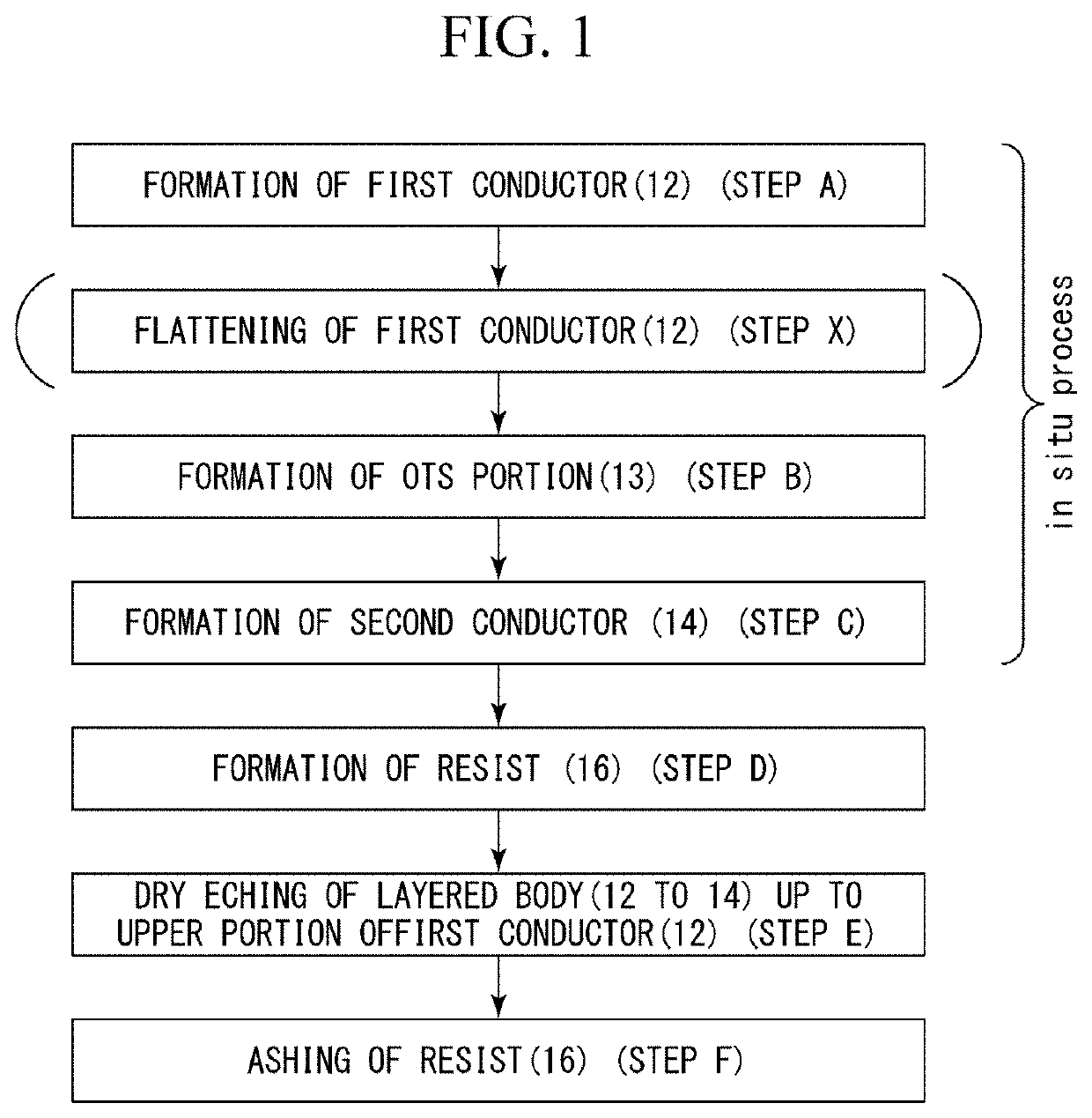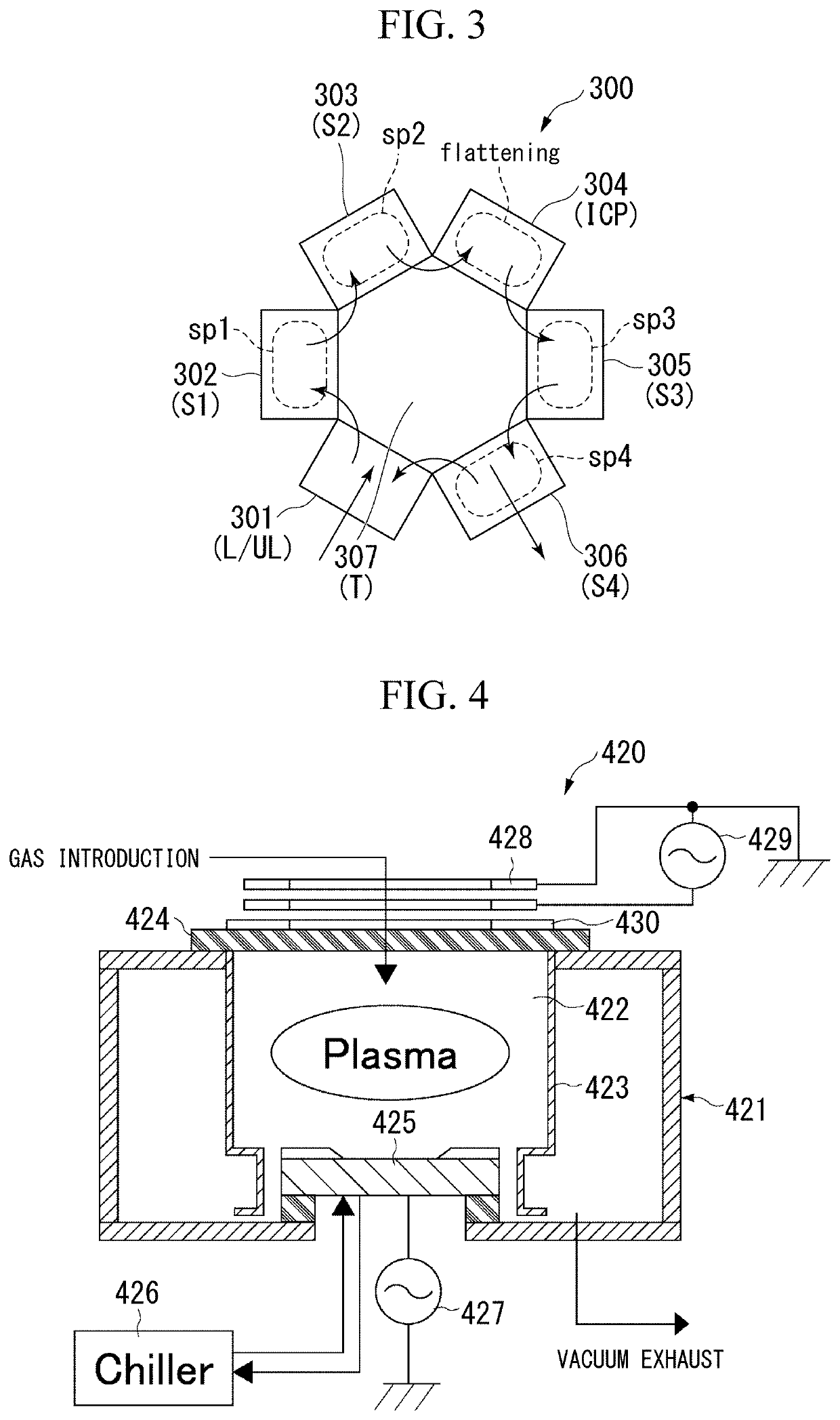Method of manufacturing OTS device, and OTS device
a manufacturing method and technology of ots, applied in the direction of semiconductor devices, basic electric elements, electrical apparatus, etc., can solve the problems of difficult to carry out etching treatment at one time, unstable character of ots devices, etc., to achieve low-cost manufacturing process, reduce irregularities, and simplify processing
- Summary
- Abstract
- Description
- Claims
- Application Information
AI Technical Summary
Benefits of technology
Problems solved by technology
Method used
Image
Examples
experimental example 1
[0085]In the Example 1, in order to evaluate the effects in the case where the series of the processes which are the aforementioned steps A, B, and C were all carried out under a reduced-pressure atmosphere (in-situ process) and the constituent members (first conductor / OTS portion / second conductor) which form the layered body were formed, a first conductor formed of a lower layer (Ti film) / an upper layer (Pt film) was formed by a sputtering method on a substrate formed of Si in the step A. Thereafter, a surface profile of the constituent member formed by the in-situ process was evaluated by use of STM (or AFM).
experimental example 2
[0086]The experimental example 2 is only different from the experimental example 1 in that an ICP process (step X) is carried out on a surface of the first conductor in in-situ process after the first conductor was formed by the sputtering method in the step A and before carrying out the step B. The other points were the same as those of the experimental example 1.
experimental example 3
[0087]The experimental example 3 is only different from the experimental example 1 in that the first conductor is exposed to an air atmosphere after the first conductor was formed by the sputtering method in the step A and before carrying out the step B. The other points were the same as those of the experimental example 1.
[0088]Table 1 is a list including film formation conditions common to the experimental examples 1 to 3. As a processing gas, Ar gas was only used except for the TiN film. In the case of the TiN film, a mixed gas including Ar and N2 was used. Only for the Ti film, film formation was carried out at a room temperature. For the other films, film formation was carried out at 150° C.
[0089]Note that, Table 1 also shows film formation conditions of a Mo film that can be used instead of the TiN film constituting the second conductor.
[0090]In Table 1, Working Pressure represents a pressure during formation, Power represents electric power applied to a target, Ar Flow repres...
PUM
| Property | Measurement | Unit |
|---|---|---|
| surface roughness Rp | aaaaa | aaaaa |
| surface roughness Rp- | aaaaa | aaaaa |
| applied voltage | aaaaa | aaaaa |
Abstract
Description
Claims
Application Information
 Login to View More
Login to View More - R&D
- Intellectual Property
- Life Sciences
- Materials
- Tech Scout
- Unparalleled Data Quality
- Higher Quality Content
- 60% Fewer Hallucinations
Browse by: Latest US Patents, China's latest patents, Technical Efficacy Thesaurus, Application Domain, Technology Topic, Popular Technical Reports.
© 2025 PatSnap. All rights reserved.Legal|Privacy policy|Modern Slavery Act Transparency Statement|Sitemap|About US| Contact US: help@patsnap.com



